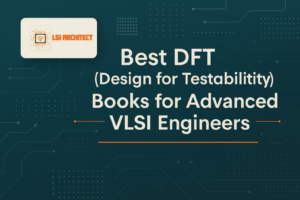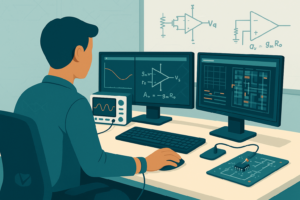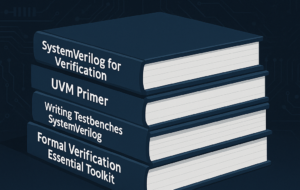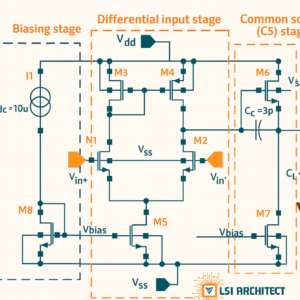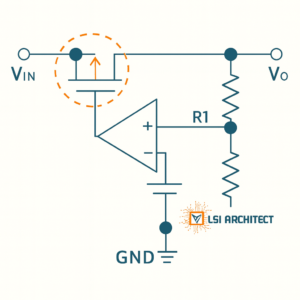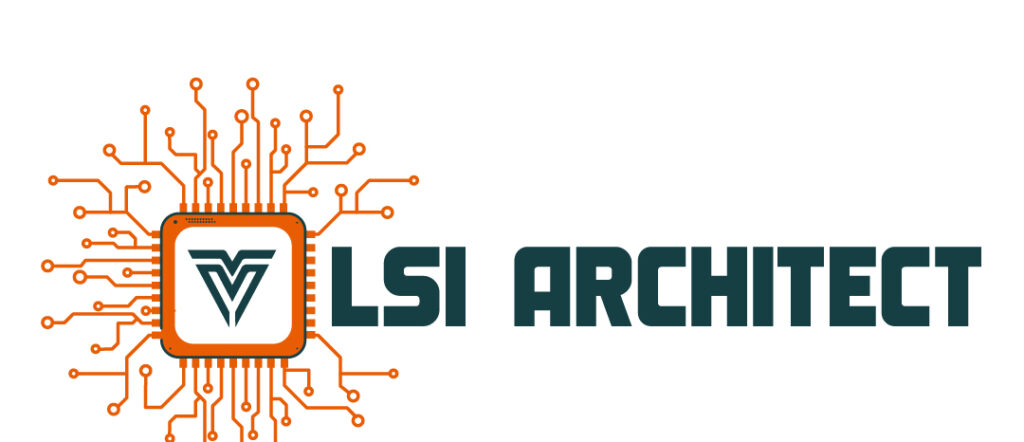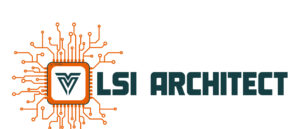Advanced LDO Design for IoT Applications: A Comprehensive Analysis of Battery-Optimized Architectures and Technology Scaling
The Internet of Things (IoT) ecosystem continues to expand at an unprecedented pace, driving demand for ultra-low power, high-efficiency voltage regulators capable of maximizing battery life while maintaining robust performance. Low-dropout (LDO) regulators have emerged as critical components in IoT power architectures, particularly for extended battery operation, minimal standby power, and reliable regulation under varying loads 12.
Introduction
Modern IoT devices operate in harsh environments with stringent power constraints, necessitating LDO designs that achieve nanoampere quiescent currents while maintaining fast transient response and high PSRR. This post reviews state-of-the-art LDO architectures optimized for IoT and compares proven designs across CMOS nodes.
Battery Life Optimization: The Critical Design Challenge
Ultra-Low Quiescent Current Requirements
Extending battery lifetime often requires years of autonomous operation, pushing LDO quiescent current into the nanoamp range 34. MCP1811: 250 nATPS7A02: 25 nA enable dramatic lifetime gains 53.
Adaptive Power Management Strategies
Moreover, adaptive and dynamic biasing reduce idle consumption while preserving active-mode performance; recent 65 nm designs auto-adjust bias with load 67.
- Dynamic current biasing proportional to load.
- Adaptive biasing to re-tune amplifier characteristics.
- Hybrid schemes combining both for best efficiency 7.
These approaches enable sub-µA IQ (≈930 nA) over 0–100 mA load ranges 6.
Advanced LDO Topologies for IoT Applications
Capacitor-Less Designs for Area Efficiency
CL-LDOs remove large output capacitors using smart compensation, ideal for compact IoT boards 8910. Recent 180 nm results: 47 µA IQ, 25 µV/mA load regulation, 0.2 µs settling for 0–20 mA steps 9.
Adaptive Biasing with Dynamic Load Sensing
A 65 nm adaptive LDO reconfigures from two to three stages by load current, delivering 930 nA no-load IQ and wide 0–100 mA support 6.
Transient Enhancement Techniques
Furthermore, TEUs, dynamic charging transistors, inverter-based units, and feed-forward paths sharpen load-step response without hurting DC accuracy 11.
Technology Node Comparison & Scaling Effects
180 nm → 22 nm Highlights
- 180 nm: robust, low cost; 47 µA IQ typical 9.
- 90 nm: sub-µA IQ achievable 13.
- 65 nm: >60 dB PSRR to 10 MHz; ultra-low dropout 14.
- 22 nm: tri-gate control; −110 dB PSRR, 25 mV dropout reported 17.
Scaling Trends
- Sub-100 nA IQ
- >100 dB PSRR
- <100 mV dropout
- Higher integration enables richer adaptive control
Comparative Analysis of State-of-the-Art Designs
University of Macau (Nano-Amp CL-LDOs)
- LDO1: 1.5 µA dynamic; LDO2: 58 µA with inverter-based enhancement
- 65 nm; hybrid/event-driven biasing 7
NTU Singapore (High-PSRR IoT LDO)
- >60 dB to 10 MHz, 80 mV dropout, 0.1–100 mA load, 65 nm 14
Energy-Harvesting LDO
- 100 mV dropout @ 0.6 V in; 220 nA IQ; 99.96% current efficiency 18
Commercial Devices
Microchip MCP1811
- 250 nA IQ; 150/300 mA; 1×1 mm UDFN; up to 4× battery-life gains 5
TI TPS7A02
- 25 nA IQ; ≈8.7 vs. 5.0 years lifetime in typical use 3
Ricoh RP124
- 0.3 µA LDO IQ; integrated battery monitor; 100 mA output 19
Advanced Design Considerations
PSRR Optimization
- High-gain error amplifiers (>100 dB DC)
- Feed-forward ripple cancellation
- Miller pole-zero optimization
- Low-ESR output capacitors for HF PSRR 21
Stability & Compensation
Miller & Lag-Lead
Classic Miller gives pole splitting; lag-lead nulls RHP zero for first-order behavior 23.
VCCS Compensation
Generates stable zeros independent of load capacitance—great for fully integrated LDOs 24.
Pass Device Trade-offs
PMOS: simpler drive, reverse-current protection. NMOS: lower dropout, faster transients, higher efficiency—often preferred for battery-first IoT despite added complexity 2527.
Energy Harvesting Integration
- Wide input 0.7–2.8 V
- >35% efficiency at typical loads
- Fast startup and ultra-low standby for intermittent sources 2829.
Future Trends & Emerging Technologies
Digital LDOs
Pseudoflash-ADC control enables one design to meet multiple specs with programmability 30.
ML-Aided Control
Learning-based controllers can anticipate workload patterns and adapt bias proactively.
SiP Power
System-in-Package merges LDO + harvesting for tiny, turnkey power subsystems.
Conclusion
IoT-focused LDOs now deliver sub-100 nA IQ, >100 dB PSRR, and <100 mV dropout—often without external capacitors. Consequently, expect more intelligent, adaptive control as analog excellence meets digital insight to squeeze every joule from tiny sources.
References
SEO focus: ultra-low power LDO for IoT, capacitor-less LDO, adaptive biasing, PSRR optimization, energy-harvesting regulators.
FAQs
